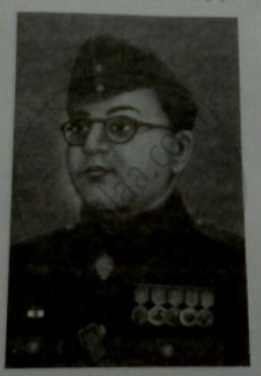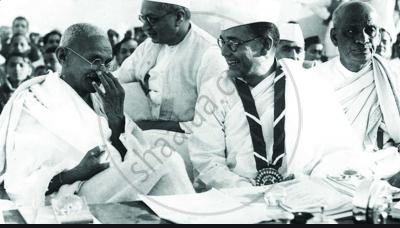Advertisements
Advertisements
Question
Under the leadership of Subhash Chandra Bose the Indian National Army launched a frontal attack on the British ports. In this context briefly describe the life of Subhash Chandra Bose.
Solution
Subhash Chandra Bose was born on 23rd January, 1897 in Cuttack, Orissa. After completing his early education he joined the famous Presidency College at Calcutta. He went to England for higher studies and passed the Indian Civil Service Examination in 1920. He got attracted towards the freedom movement of the country and resigned from the ICS in the following year. He joined the Non-Cooperation Movement launched by Gandhiji and was imprisoned for six months in December 1921. He bitterly criticized Gandhiji when he withdrew the movement in 1922. He also participated in Civil Disobedience Movement of 1930. He was a strong supporter of socialist ideas. He became the President of Congress with the support of younger elements in the Congress. His differences with Gandhiji reached their height in 1939. Inspite of Gandhiji’s opposition he was again elected President of the Congress in 1939. But he resign from this post and founded the Forward Bloc in 1939 to carry on the freedom struggle while remaining within the Congress.
APPEARS IN
RELATED QUESTIONS
Study the picture given below and answer the following questions:

1) Identify the leader given in the picture. Name the Political party and the Military Organization that he formed
2) State any three objectives of the Political party that he founded.
3) Mention any four objectives of the Military Organisation that he formed.
In which year was Bose elected as President of the Congress for the first time?
Name the two organizations founded by Bose in Berlin?
What was the immediate objective of the Forward Bloc?
Name any two slogans, which became the battle cry of the INA.
Name the military organisation formed by Subhash Chandra Bose.
Or
Name the organisation of which Subhash Chandra Bose became the Supreme Commander in 1943.
Mention two-contributions of the Indian National Army (INA) to the Indian Freedom Movement.
Mention any two resolutions passed in Bangkok Conference of the INA.
What were the three decisions taken at the Tokyo conference?
Answer the following:
(i) Name the gentlemen in the picture along with Gandhi.
(ii) Name the party which he independently formed within the Congress. When this party was formed.
